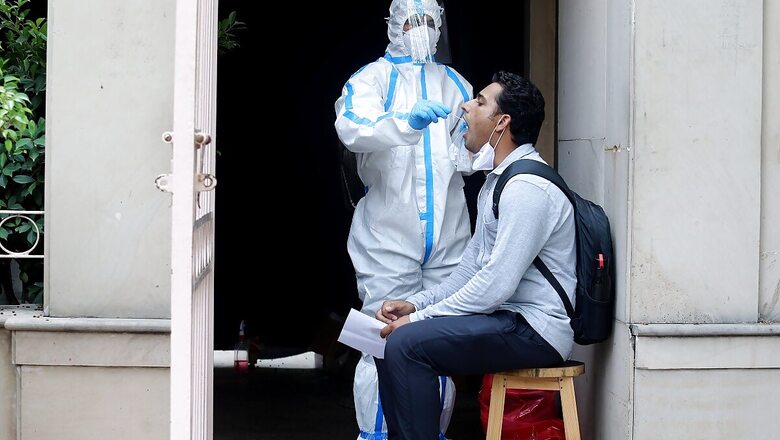
views
The newly emergent B.1.617.2 variant has sparked talk of a return to restrictions for countries that had only just begun to come out of a Covid freeze on life as they knew it. The UK has already flagged it and Singapore is bringing back curbs to check its spread. Along with fears, the new variant, which is of the same B.1.617 lineage first reported in India, also led to some confusion when Delhi CM Arvind Kejriwal flagged it as the ‘Singapore strain’, prompting the island nation to clarify that it is actually linked to India. So, why is this strain causing anxiety?
What is B.1.617.2? How’s it different from B.1.617?
B.1.617, the variant originally identified in October last year, was found to be behind 60% of the cases in Maharashtra by mid-February 2021, when the second wave was rearing its head in the country. The B.1.617.2 is what is known as a sub-lineage of B.1.617, which has also spawned two other sub-lineages: B.1.617.3, the first sub-lineage to be detected, and B.1.617.1.
B.1.617 was earlier this month classified as a variant of concern by WHO. But in recent weeks, it is the B.1.617.2 sub-lineage that has triggered widespread alarm. The UK in early May termed it a variant of concern even as the country prepared to leave behind Covid restrictions that had been in place for months.
Health officials and scientists in the UK suspect that the B.1.617.2 sub-lineage is as fast-spreading as the B.1.1.7 or the Kent variant that had driven a rapid rise in cases in the country last year.
The prominent change in these variants and sub-lineages of the novel coronavirus is in the spike protein, which helps it to invade and latch on to human cells. In fact, according to BBC, there are apprehensions that B.1.617.2 will push out the Kent variant and become the dominant strain in the UK.
How rampant is B.1.617.2 in India?
It is reported that the B.1.617.2 has become the most common variant in India. About a third of the samples from India submitted to flu virus repository GISAID for virus sequencing were linked to the B.1.617.2 variant. In fact, this lineage is now by far the most prevalent in new cases in India, the data suggests with B.1.617 and B.1.617.2 together making up 60% of the samples from India in the last 60 days.

Reports say that Bihar, Chhattisgarh and Jharkhand have seen a large number of cases linked to the B.1.617.2 variant. However, the prevalence rate is extrapolated from samples submitted to GISAID, which says that the data may not reflect the true picture of the spread of the variant.
Is the new variant more powerful? Will vaccines work against it?
While health experts in UK have suggested that B.1.617.2 may be up to 50% more transmissible than B.1.1.7, that is, the UK, or Kent variant, more data is awaited to accurately determine whether it causes a more severe disease.
The UK Health Secretary Matt Hancock said this week that there was evidence to suggest that vaccines already out are effective against the B.1.617.2 sub-lineage. Trust in vaccines to fend off this variant is also echoed by UK’s decision to fast-track the vaccination process by reducing the gap between two doses. Hancock had added that data from Oxford University and preliminary reports from India showed that vaccines are effective against the variant.
The UK is using three different shots — the ones developed by Pfizer-BioNTech, AstraZeneca and Moderna — to inoculate its population against the novel coronavirus. After deciding to close schools in the face of new cases driven by the B.1.617.2 variant, Singapore, too, has decided to ramp up its vaccine drive.
Read all the Latest News, Breaking News and Coronavirus News here. Follow us on Facebook, Twitter and Telegram.




















Comments
0 comment